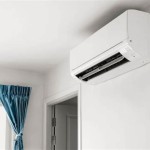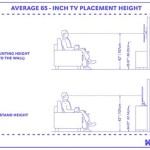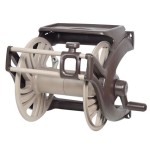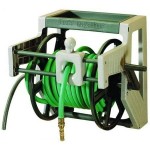Wall Mount Hand Crank Winch: A Comprehensive Guide
A wall mount hand crank winch is a mechanical device designed to provide controlled lifting or pulling power through the rotational force applied by a hand crank. It is a versatile tool commonly employed in various applications where electric power is either unavailable, undesirable, or simply unnecessary. This article will delve into the functionality, selection criteria, applications, installation, maintenance, and safety considerations associated with wall mount hand crank winches.
At its core, a hand crank winch operates on the principle of mechanical advantage. The relatively small force applied to the handle is amplified through a gear system, resulting in a significantly larger force exerted on the winch cable or strap. This allows users to lift or pull substantial loads with minimal effort, making it an invaluable tool in many situations. The ability to precisely control the movement of the load is another key advantage, enabling delicate maneuvers and preventing sudden drops.
Wall mount winches, as their name suggests, are specifically designed to be securely mounted to a vertical surface such as a wall, post, or sturdy structure. This mounting configuration provides stability and allows the winch to be operated at a convenient height for the user. The robust construction of these winches ensures they can withstand the stresses associated with lifting and pulling heavy loads.
The primary components of a wall mount hand crank winch typically include the winch frame, drum, cable or strap, gear system, crank handle, and a braking mechanism. The frame provides the structural support for the winch. The drum serves as the spool onto which the cable or strap is wound. The gear system amplifies the input force. The crank handle provides the point of manual force application. And the braking mechanism is crucial for holding the load in place and preventing uncontrolled descent. Each of these components plays a vital role in the overall performance and safety of the winch.
Understanding Key Features and Specifications
When selecting a wall mount hand crank winch, a thorough understanding of its key features and specifications is paramount. These specifications dictate the winch's suitability for a particular application and ensure safe and efficient operation. Several critical factors need careful consideration.
The first and perhaps most important specification is the winch's load capacity. This refers to the maximum weight the winch is designed to safely lift or pull. Exceeding the load capacity can result in winch failure, posing a significant risk of injury or property damage. The working load limit (WLL) should be clearly marked on the winch and should never be exceeded. It's always advisable to choose a winch with a load capacity that exceeds the anticipated weight of the load by a safety margin.
The gear ratio is another crucial specification. The gear ratio determines the mechanical advantage provided by the winch. A higher gear ratio means that less force is required to turn the crank handle, but the speed of lifting or pulling will be slower. Conversely, a lower gear ratio requires more force to turn the handle, but the speed of operation will be faster. The optimal gear ratio depends on the specific application and the user's preference for speed versus effort.
The type and length of the cable or strap are also important considerations. Winches typically employ either steel cable or synthetic straps. Steel cable offers high strength and resistance to abrasion, making it suitable for demanding applications. Synthetic straps are lighter and more flexible than steel cable, but may be more susceptible to wear and tear. The length of the cable or strap determines the maximum lifting or pulling distance. The user should select a length appropriate for the intended application.
The braking mechanism is a critical safety feature. A reliable braking mechanism is essential for holding the load in place and preventing uncontrolled descent. Common types of braking mechanisms include mechanical brakes, ratchet brakes, and automatic brakes. Each type has its own advantages and disadvantages in terms of holding power, ease of use, and maintenance requirements. The user should carefully evaluate the different types of braking mechanisms and select one that meets the safety requirements of the application.
The winch's construction materials and finish are also important factors to consider. The frame and other structural components should be made from high-strength materials such as steel or aluminum. The finish should be durable and corrosion-resistant to withstand exposure to the elements. A high-quality finish will help to prolong the life of the winch and prevent rust and corrosion.
Applications of Wall Mount Hand Crank Winches
Wall mount hand crank winches find application in a wide range of scenarios. Their versatility and reliability make them suitable for both residential and commercial uses. Some common applications include:
Boat lifts: Wall mount winches are frequently used to raise and lower boats onto trailers or boat lifts. The controlled lifting action allows for precise positioning and prevents damage to the boat. The hand crank operation is particularly useful in situations where electricity is unavailable at the dock or boat ramp.
Loading docks: These winches are used to assist in loading and unloading cargo from trucks and trailers. They can be used to pull heavy items onto a platform or to lower items from a height. The ease of use and portability of wall mount winches make them a valuable asset in loading dock operations.
Agricultural applications: In agriculture, wall mount winches are used for a variety of tasks, such as lifting heavy equipment, pulling livestock trailers, and adjusting irrigation systems. Their rugged construction and ability to operate in harsh environments make them well-suited for agricultural applications.
Construction sites: On construction sites, wall mount winches are used for lifting materials, positioning equipment, and securing loads. They are particularly useful in confined spaces where larger lifting equipment cannot be used. Their portability and ease of installation make them a valuable tool for construction workers.
Garages and workshops: Wall mount winches are commonly used in garages and workshops for lifting engines, moving heavy machinery, and securing workpieces. They provide a safe and efficient way to handle heavy items in a confined space.
Theater and stage rigging: Wall mount winches are used to raise and lower curtains, scenery, and lighting equipment in theaters and on stages. Their precise control and quiet operation make them ideal for theatrical applications.
Home and DIY projects: These winches find use in various home improvement and DIY projects, such as lifting heavy objects, pulling vehicles, and securing loads on trailers. Their versatility and ease of use make them a valuable tool for homeowners and hobbyists.
Installation, Maintenance, and Safety
Proper installation, regular maintenance, and adherence to safety guidelines are crucial for ensuring the reliable and safe operation of a wall mount hand crank winch. Neglecting these aspects can lead to premature wear, equipment failure, and potential injuries.
Installation should be performed by a qualified individual who is familiar with the winch and its mounting requirements. The mounting surface must be strong enough to support the weight of the winch and the maximum load it is designed to lift or pull. The winch should be securely anchored to the mounting surface using appropriate fasteners. It is essential to follow the manufacturer's installation instructions carefully. Incorrect installation can compromise the winch's structural integrity and lead to failure.
Regular maintenance is essential for prolonging the life of the winch and ensuring its continued safe operation. The cable or strap should be inspected regularly for signs of wear, fraying, or corrosion. If any damage is detected, the cable or strap should be replaced immediately. The moving parts of the winch, such as the gears and bearings, should be lubricated regularly to reduce friction and prevent wear. The braking mechanism should be inspected and adjusted as necessary to ensure proper functionality. Any loose bolts or fasteners should be tightened. A periodic visual inspection of the winch frame for cracks or deformation is also recommended. A well-maintained winch will operate more smoothly and reliably, and will be less likely to fail unexpectedly.
Safety is paramount when operating a wall mount hand crank winch. Never exceed the winch's rated load capacity. Always use appropriate lifting or pulling techniques. Keep hands and fingers clear of moving parts. Never allow anyone to stand under a suspended load. Ensure that the load is properly secured before lifting or pulling. Use gloves to protect hands from abrasion. Never operate the winch if it is damaged or malfunctioning. If any problems are detected, the winch should be taken out of service and repaired by a qualified technician. Training personnel on proper winch operation and safety procedures is also a critical aspect of maintaining a safe working environment.
By understanding the functionality, selection criteria, applications, installation, maintenance, and safety considerations associated with wall mount hand crank winches, users can effectively utilize this versatile tool for a wide range of lifting and pulling tasks, ensuring both efficiency and safety.

Wall Mounted Traction Winch For Loads Up To 750 Kg S Faca

Vestil Wall Mounted Hand Winch Single S The Home

Hand Winches Wall Family Page

Haacon Wall Hand Winch Type 220 Painted Or Plated Finish 300 3000kg

Manual Winch Wall Mounted 100 200kg Mennens Netherlands

Vestil Wall Mounted Hand Winch Double D The Home

Wma Aluminum Wall Mount Jeamar Winches

Haacon Wall Hand Winch Type 4210 Plated Or Stainless Steel 80 125 Kg

Light Duty Wall Mounted Winch Low Wire Rope Winches Lifting Gear Direct

Wall Mounted Hand Winches Faca








